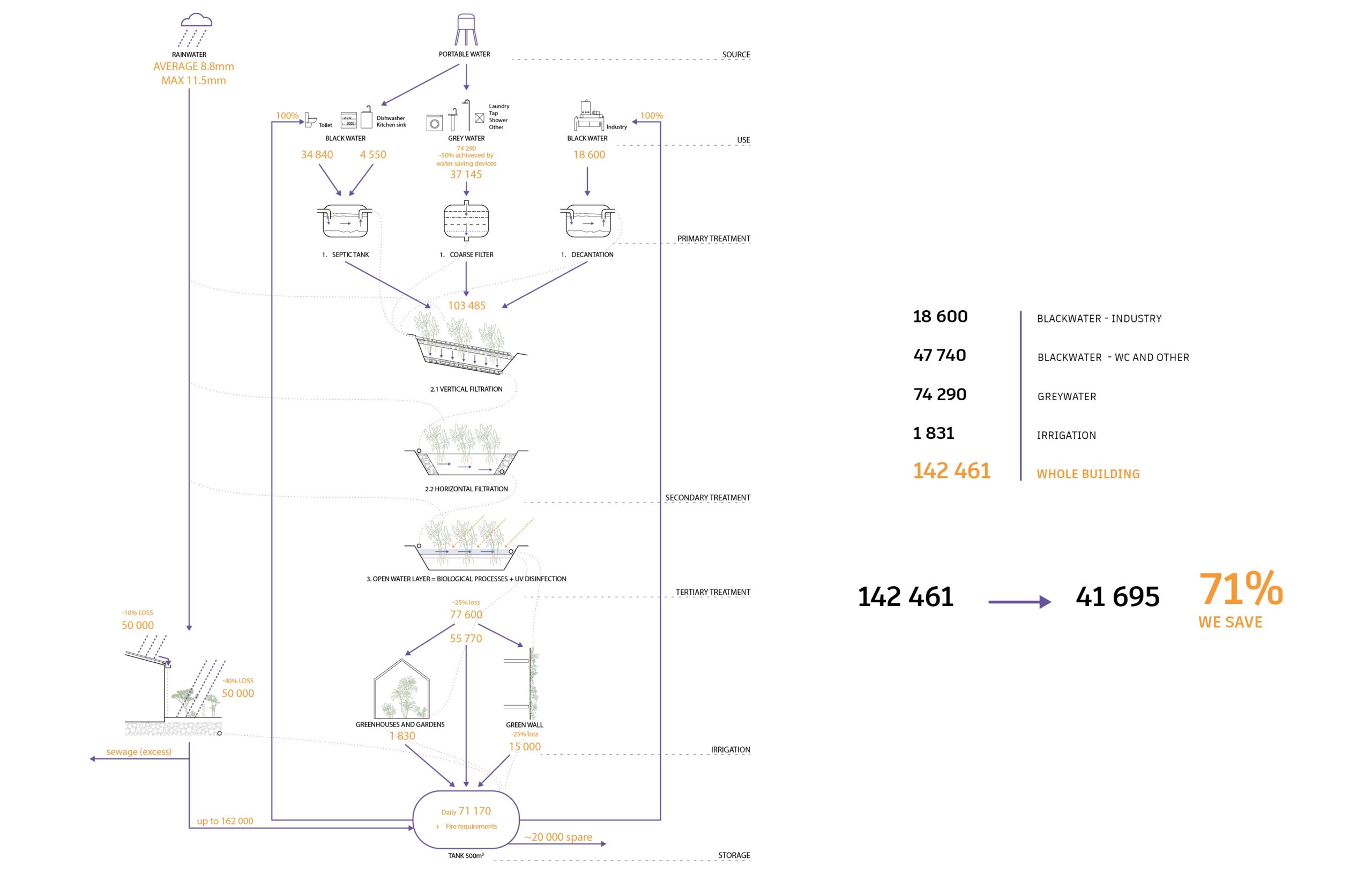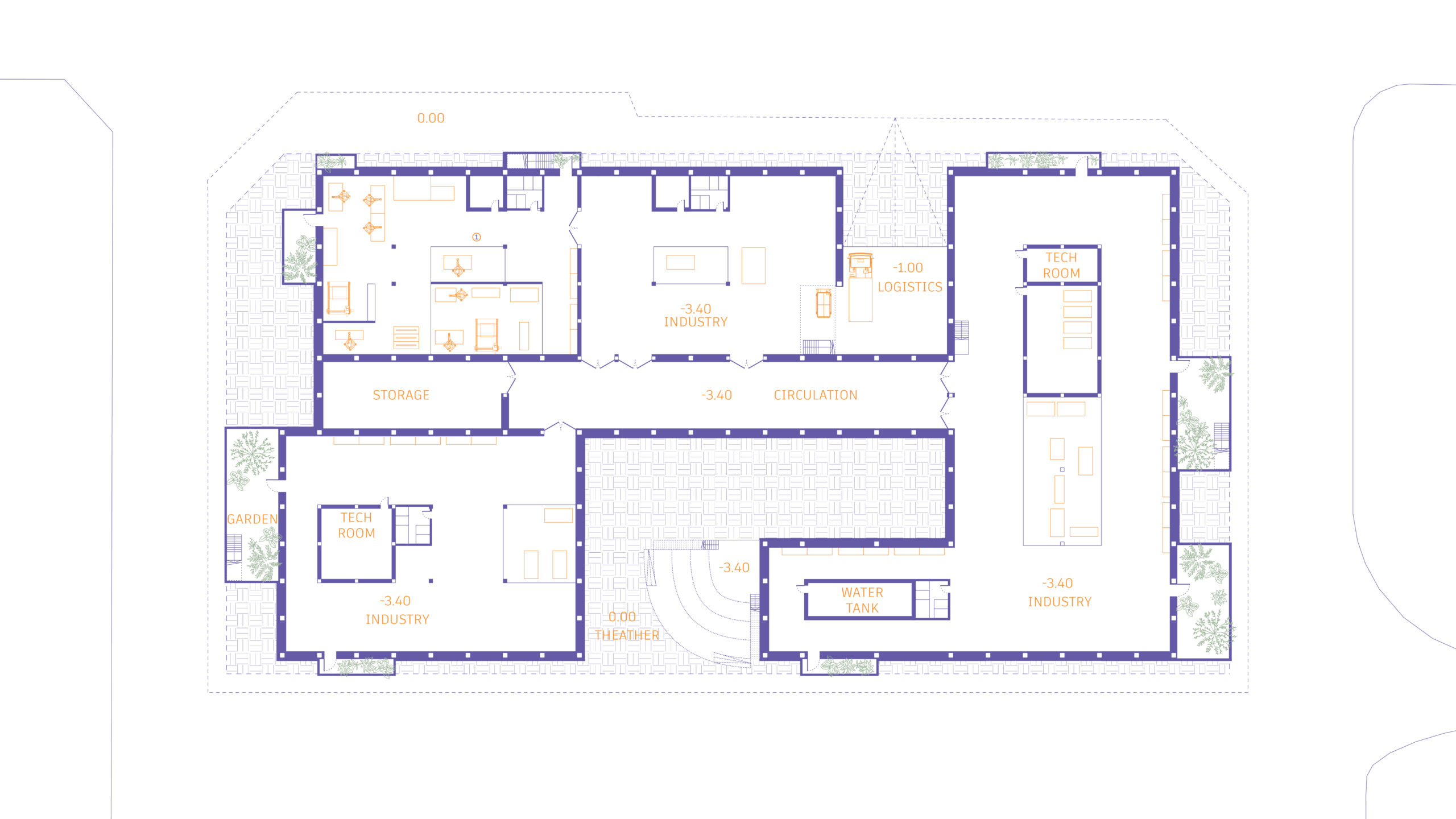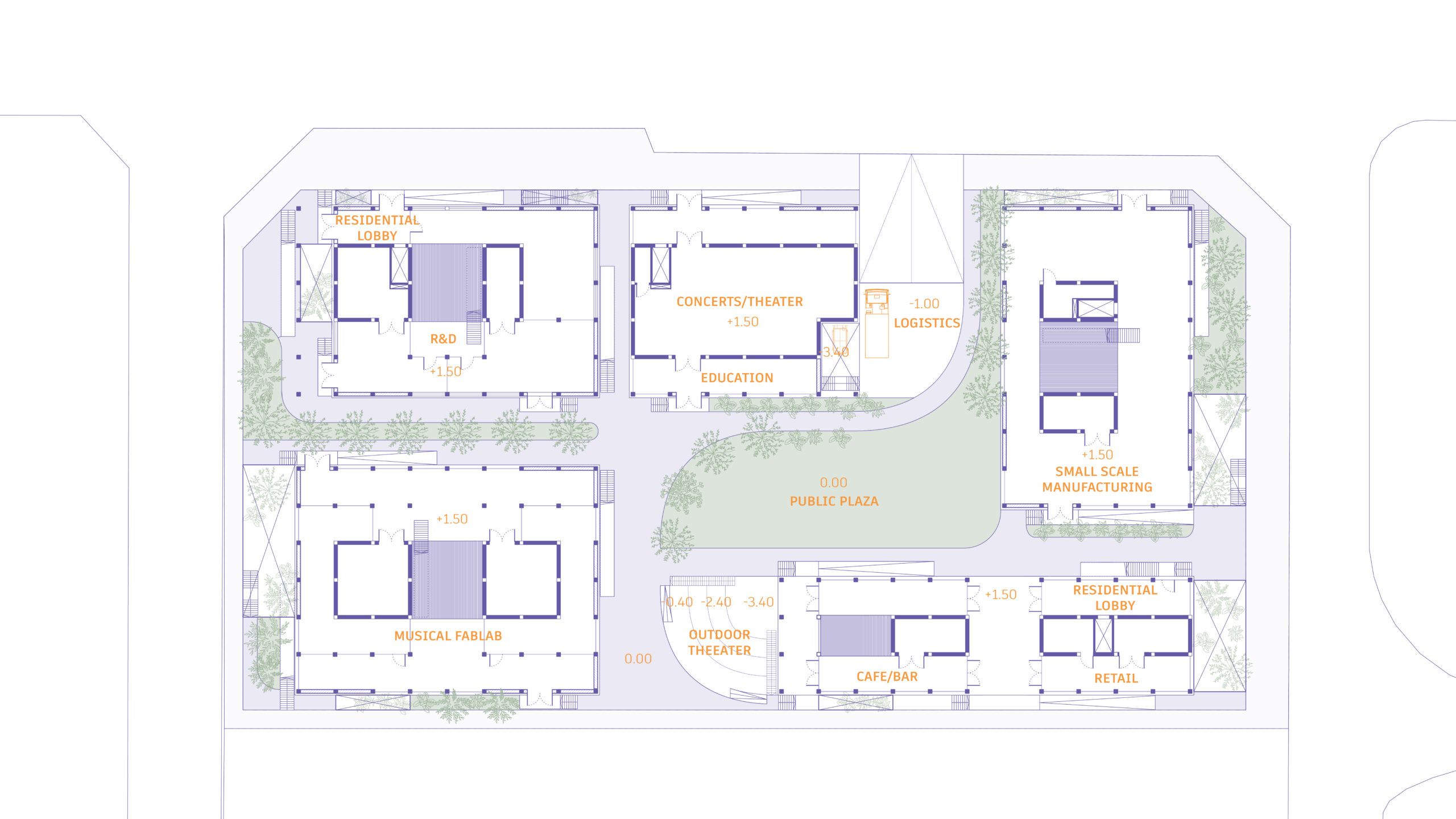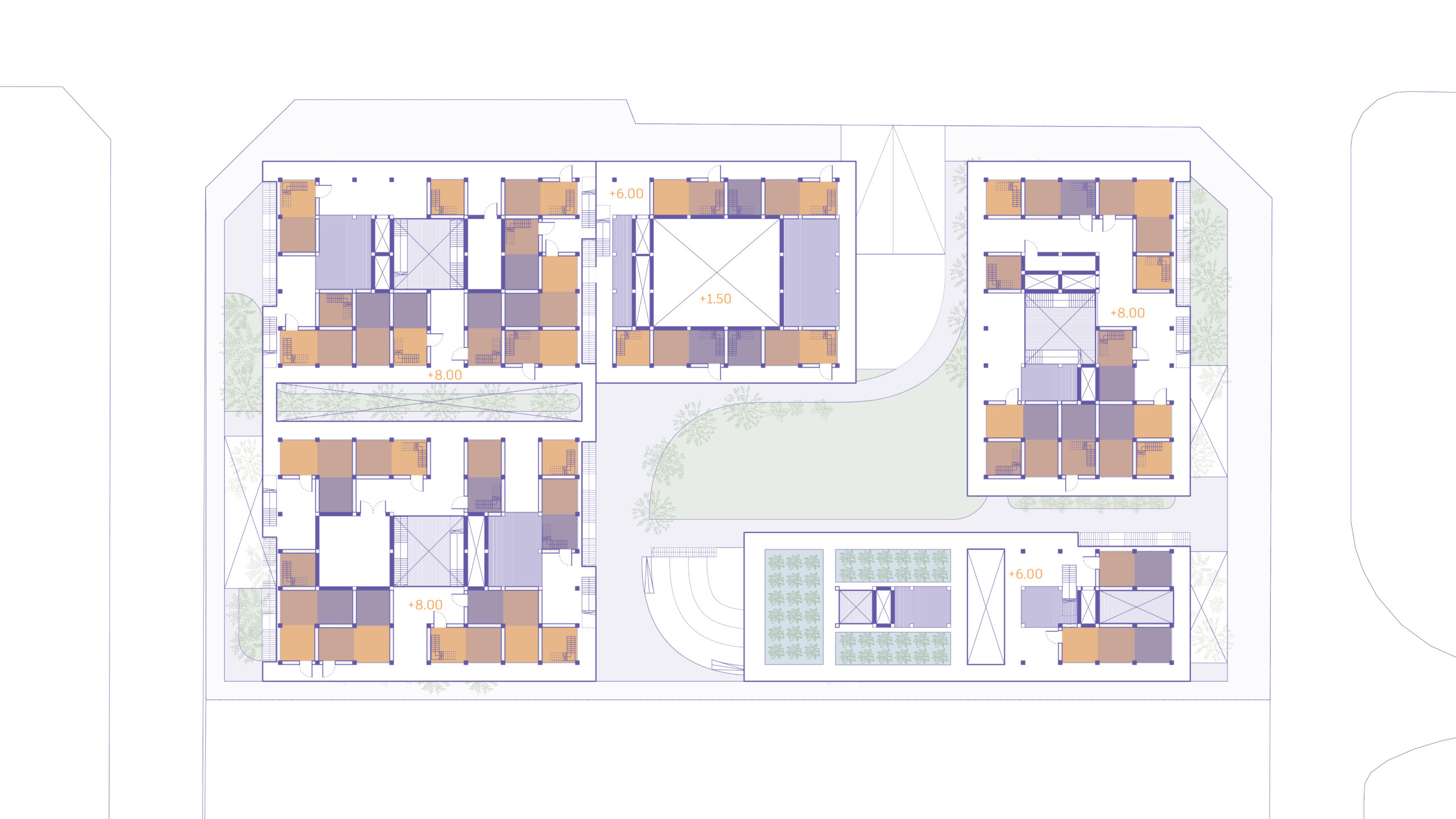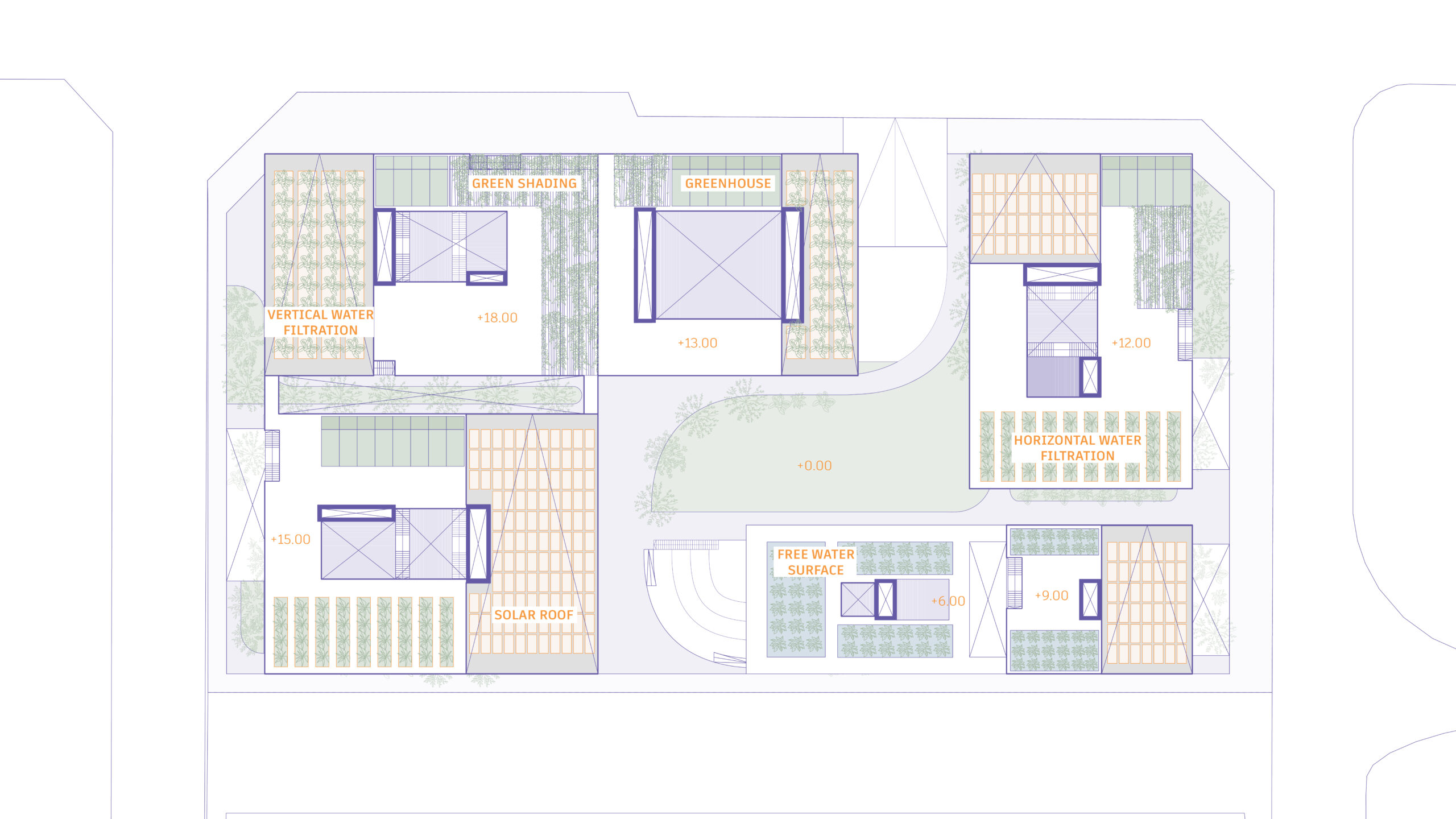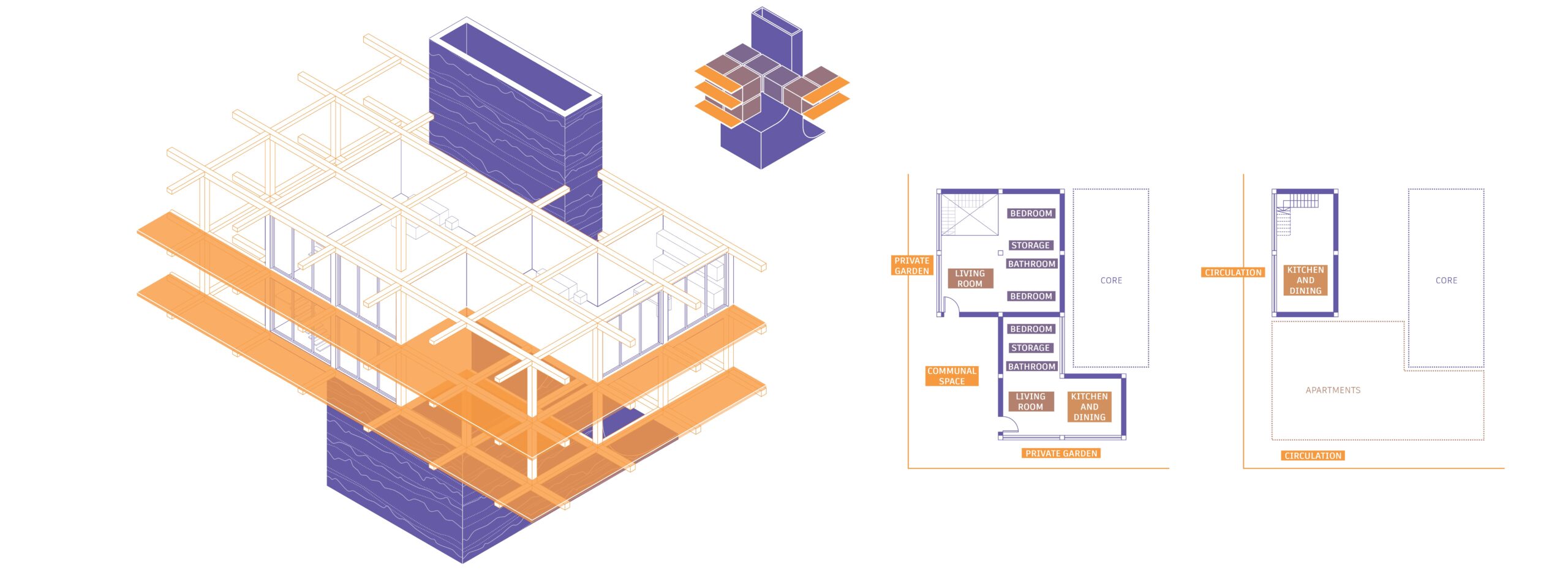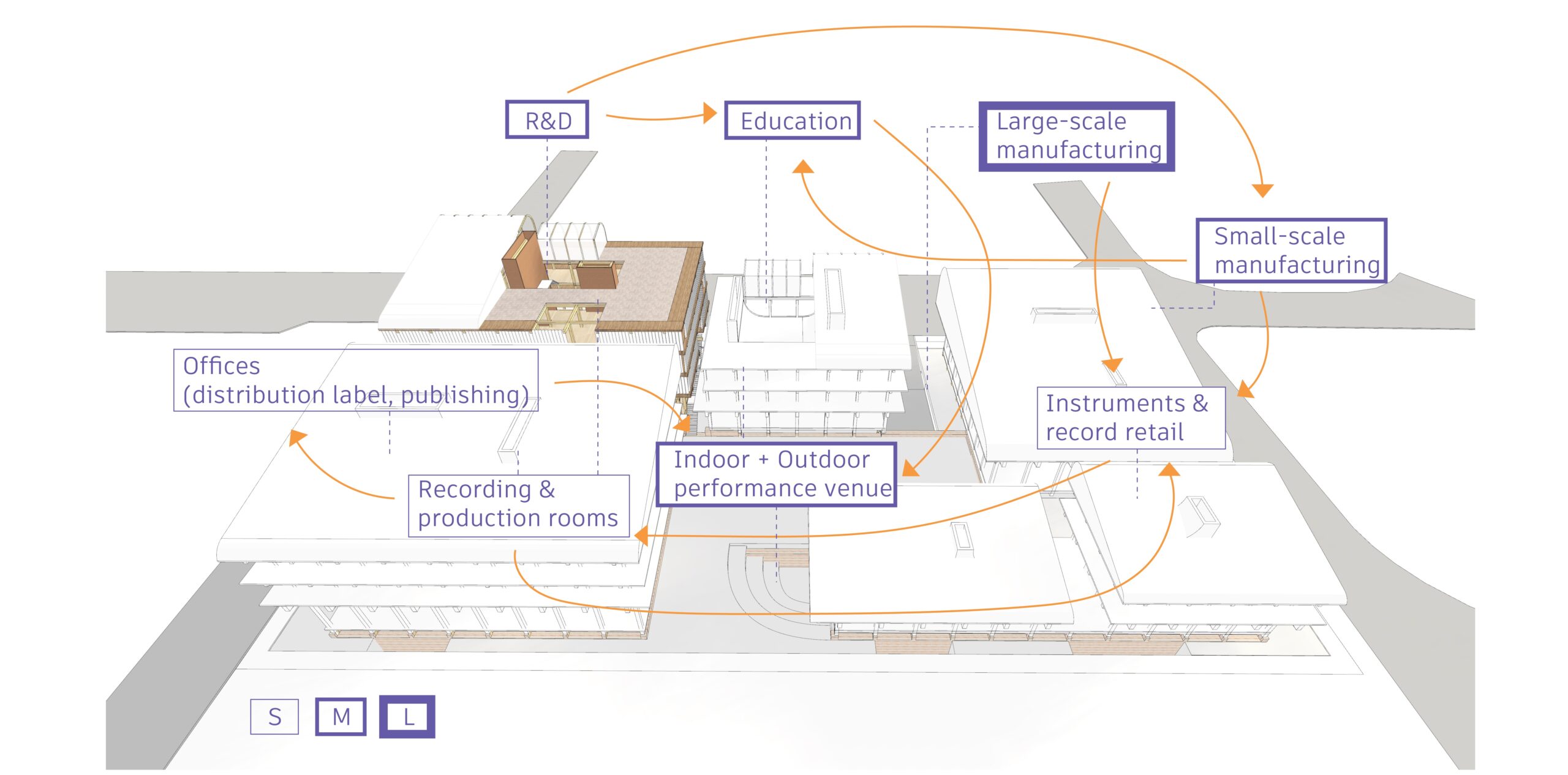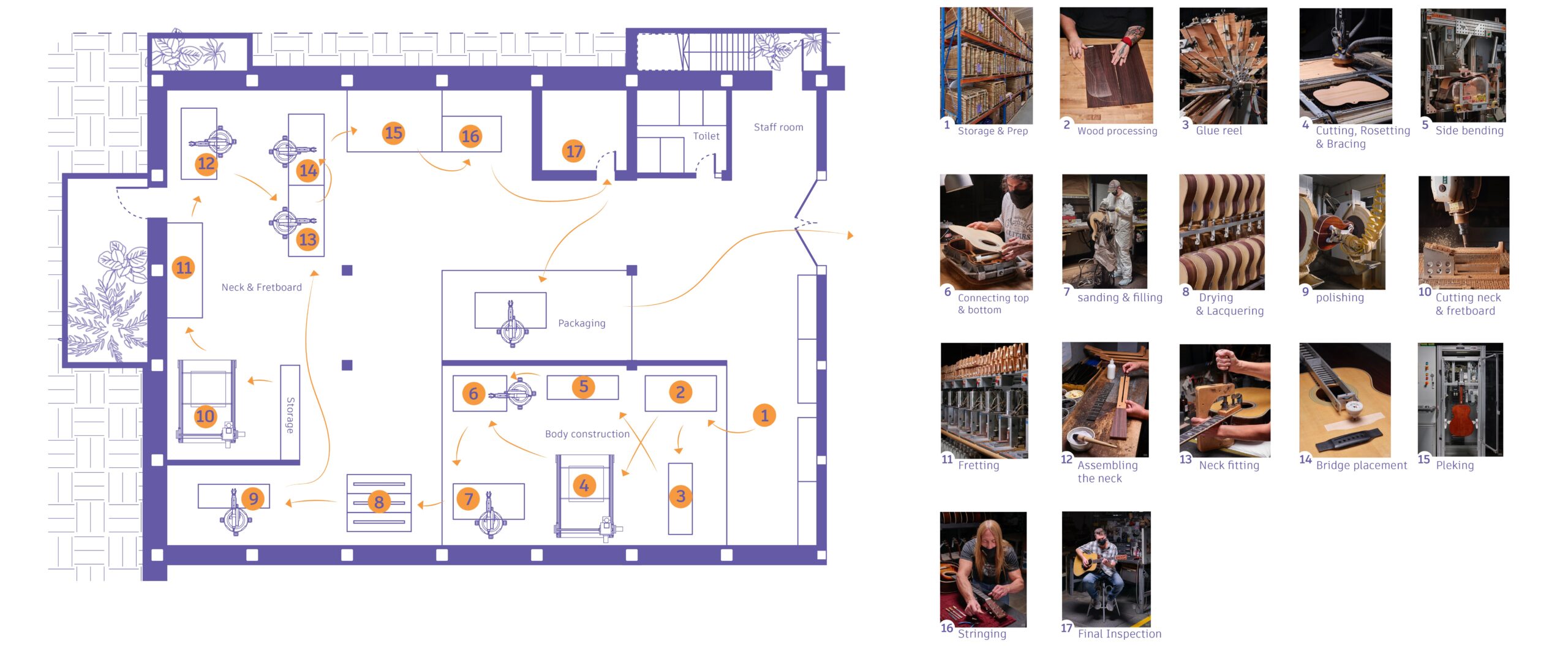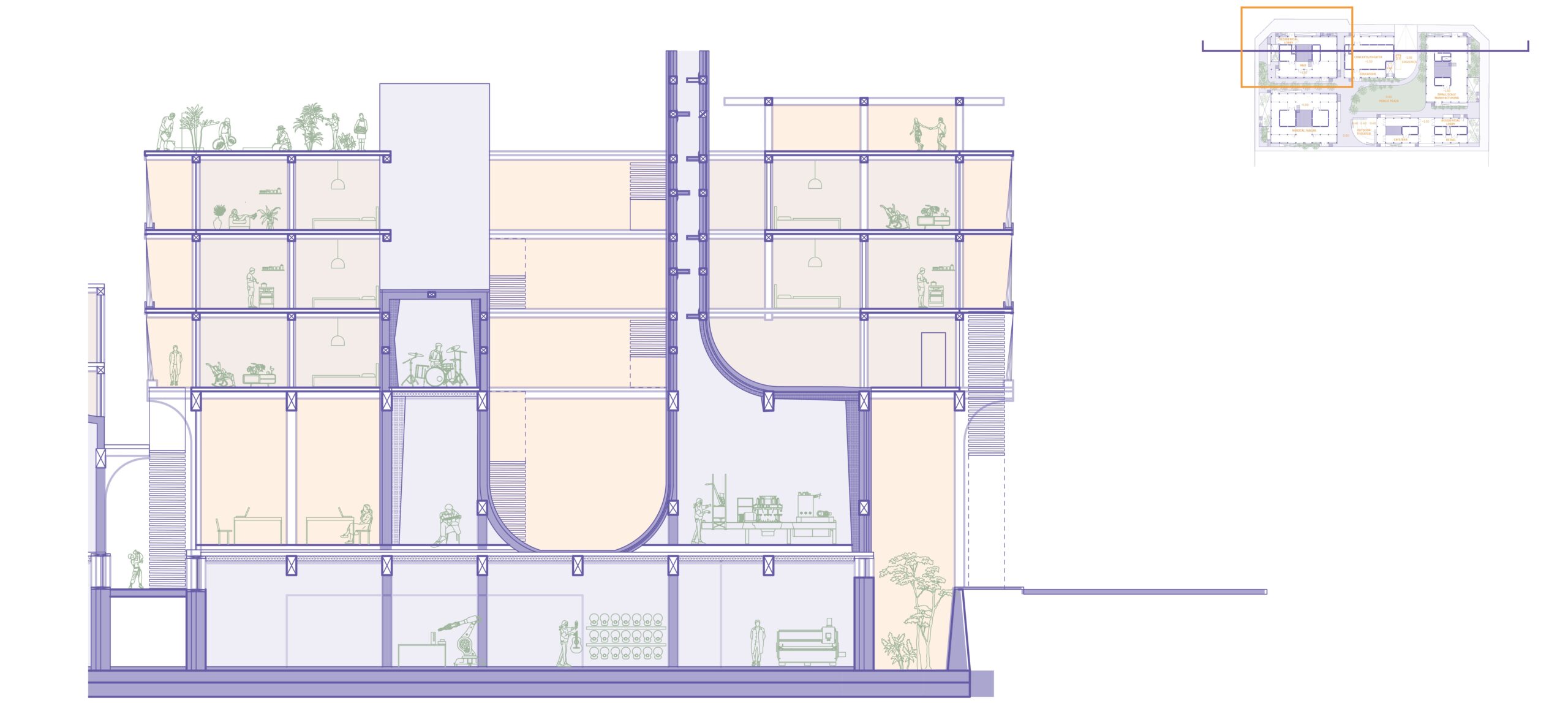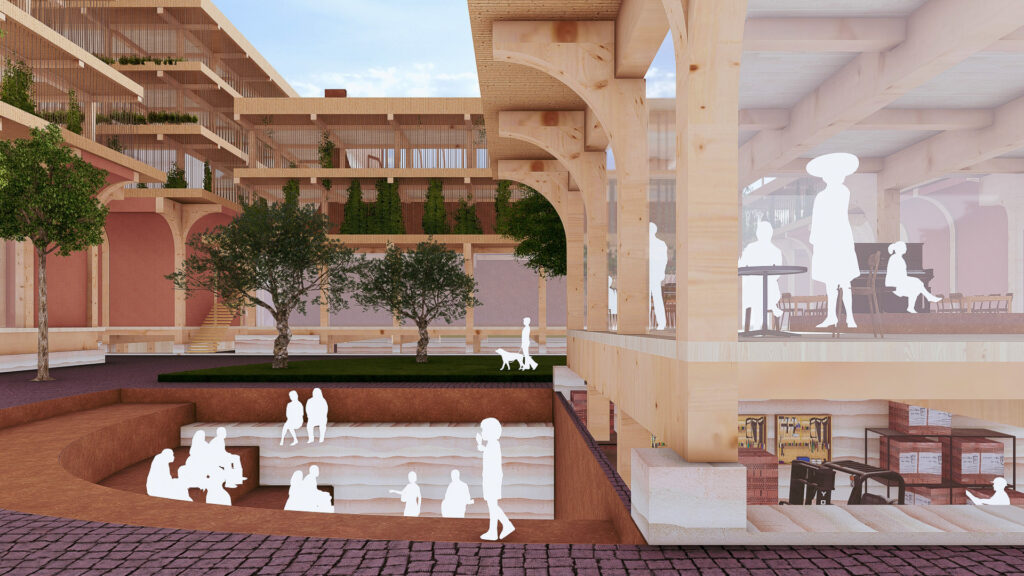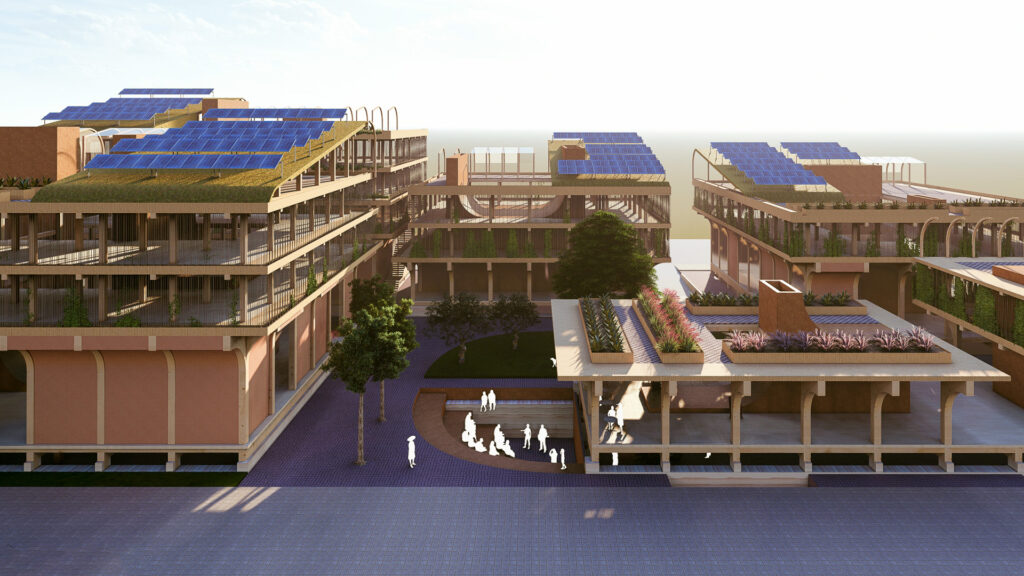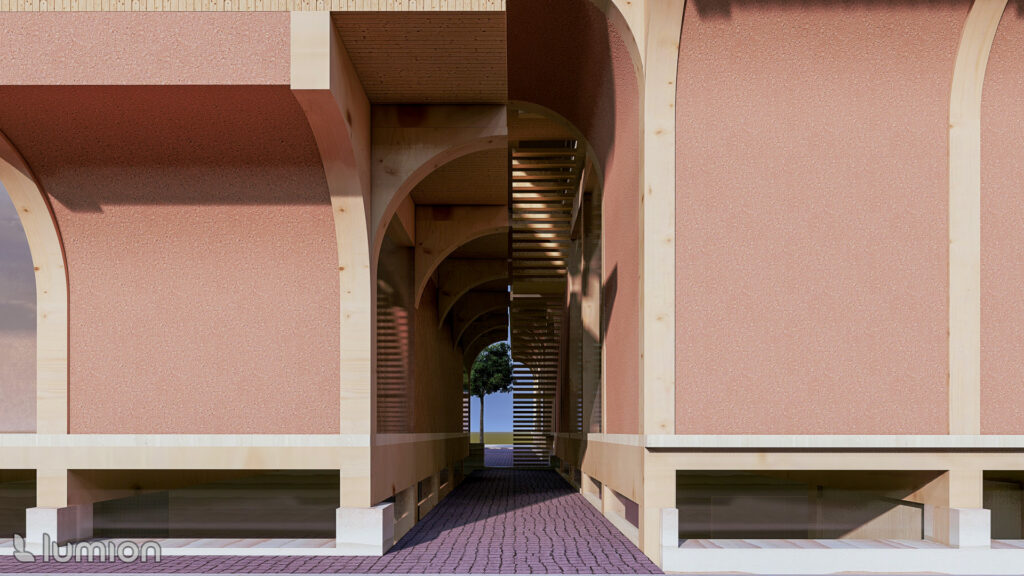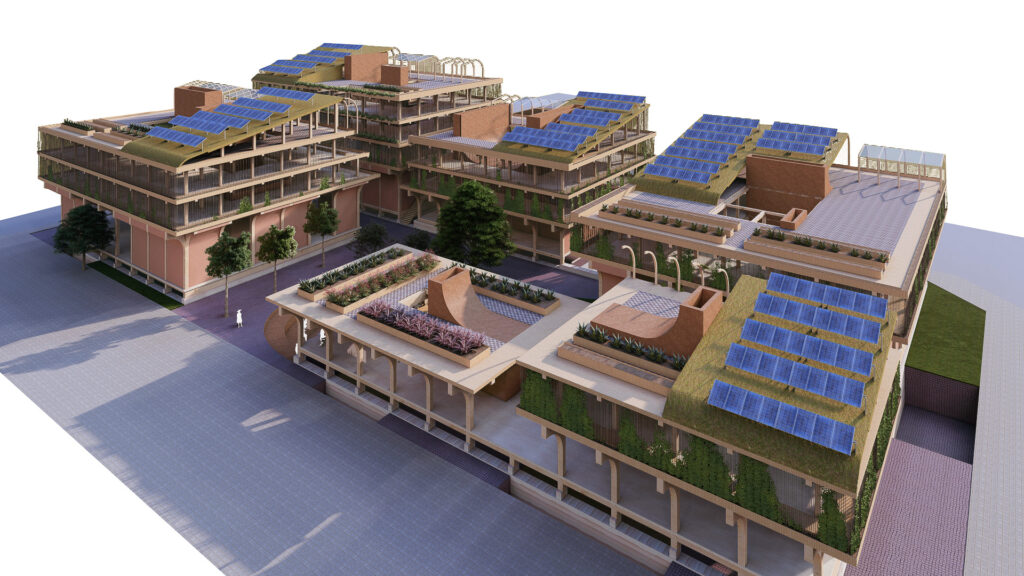A musical, industrial & residential, advanced ECHOlogical project
In response to the shifting dynamics of urban industry and the evolving needs of contemporary cities, the architectural proposal seeks to reimagine the industrial landscape through the lens of music. By integrating elements of musical expression and creativity, the design aims to transform the Verneda neighborhood into a vibrant and multifunctional hub that harmonizes industry, community, and culture.


Situated by the Besos River, the architectural endeavor embraces the area’s inherent vibrancy and noise, leveraging its bustling atmosphere as inspiration to infuse music into every aspect of the design.
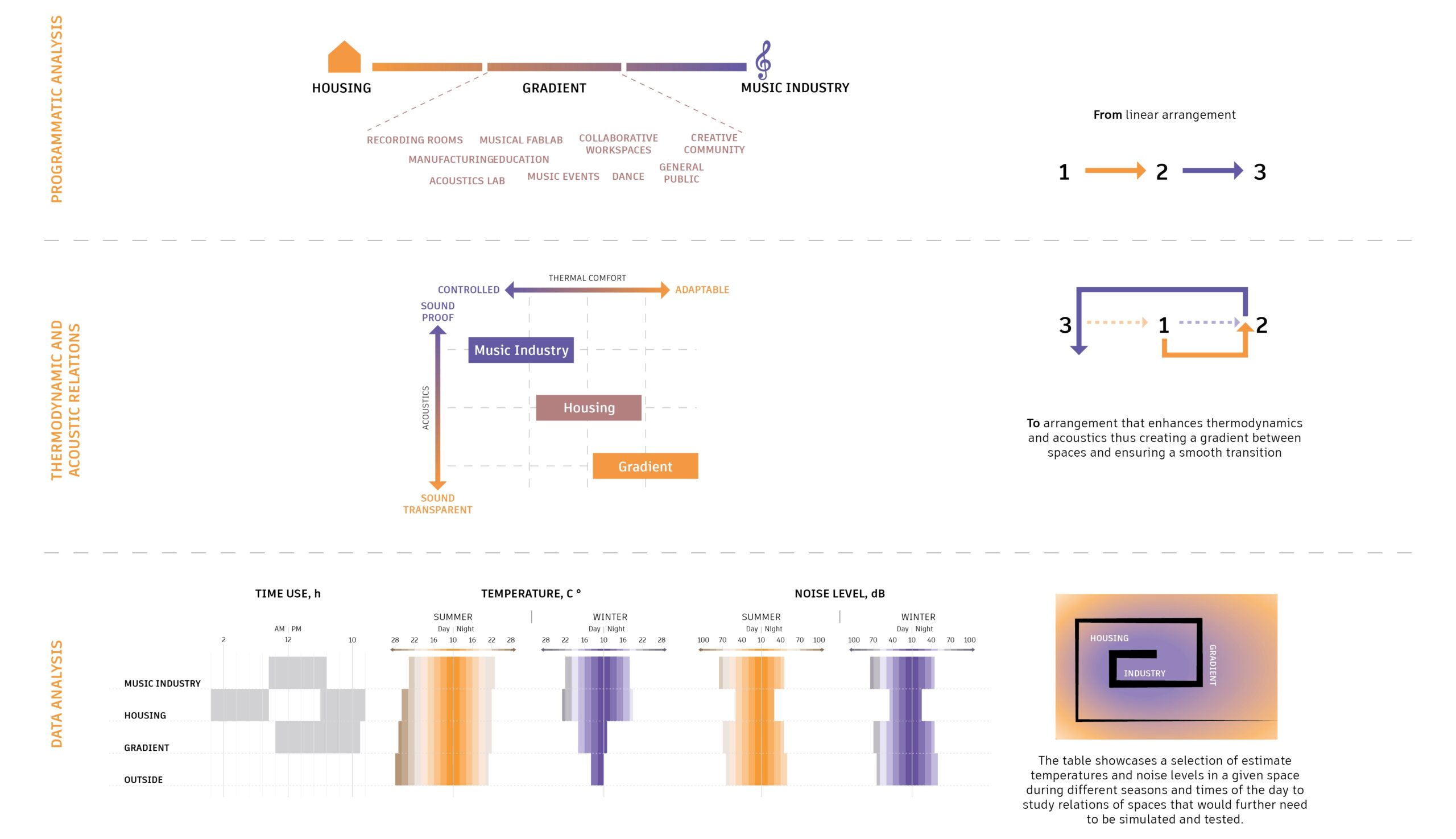
There are three programmatic clusters – industry, gradient and housing, that have been assessed for their acoustic and thermal requirements in relation to one another and hence a spiral diagram was made further explaining the concept developed for this design proposal.
Mixing of housing and industry will be achieved through music and “gradient spaces” that relate to both musical industry and housing, regulating thermodynamic and acoustic properties, as well as creating a sense of community in the building.
Linear arrangement industry > gradient > housing (1 > 2 > 3), has been put in the order of its acoustic and thermodynamic requirement order resulting as 3 > 1 > 2 and thus creating a spiral.
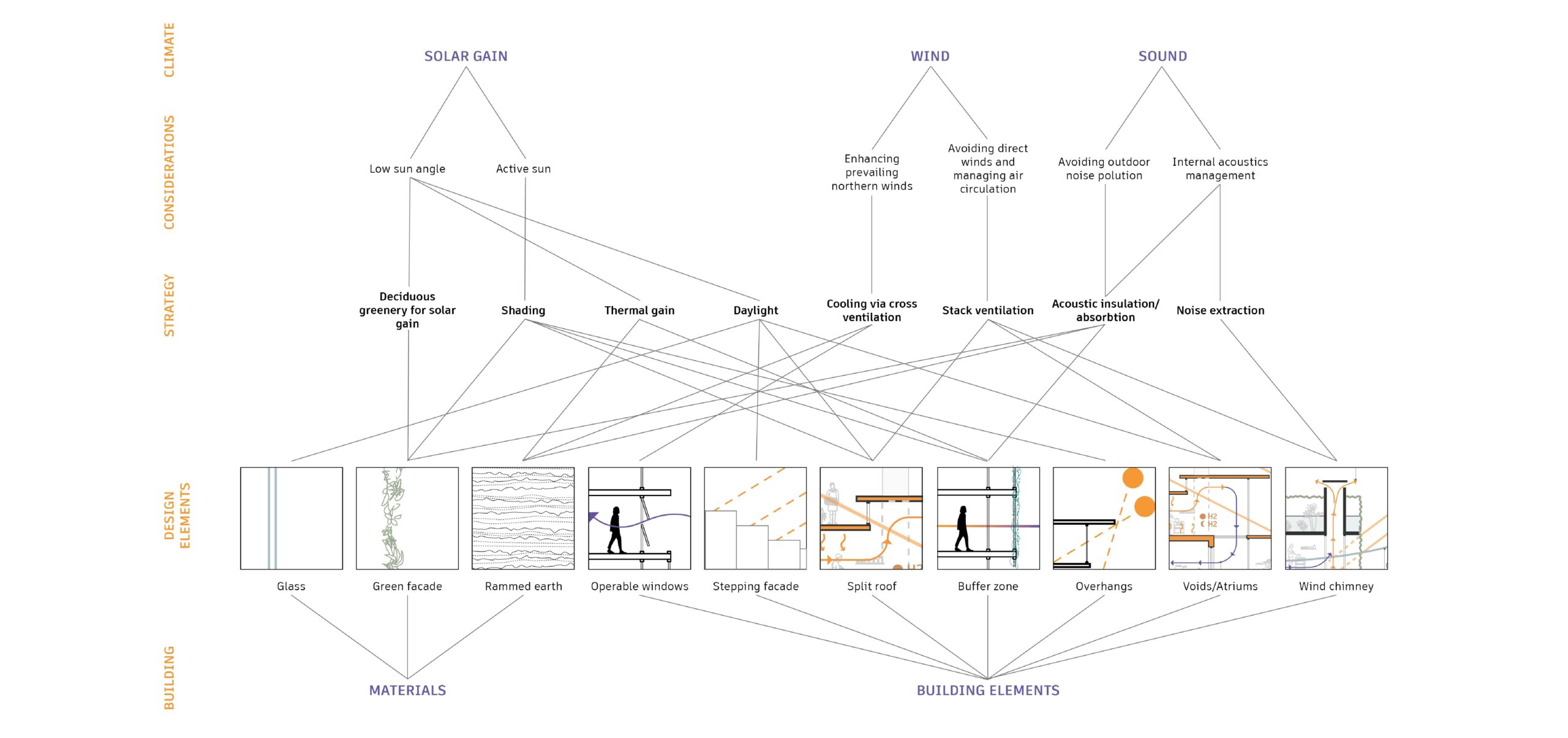
Diagram above explores the relationship between the local climate and the building, defining strategies and appropriate design elements or solutions to design with consideration of the context.
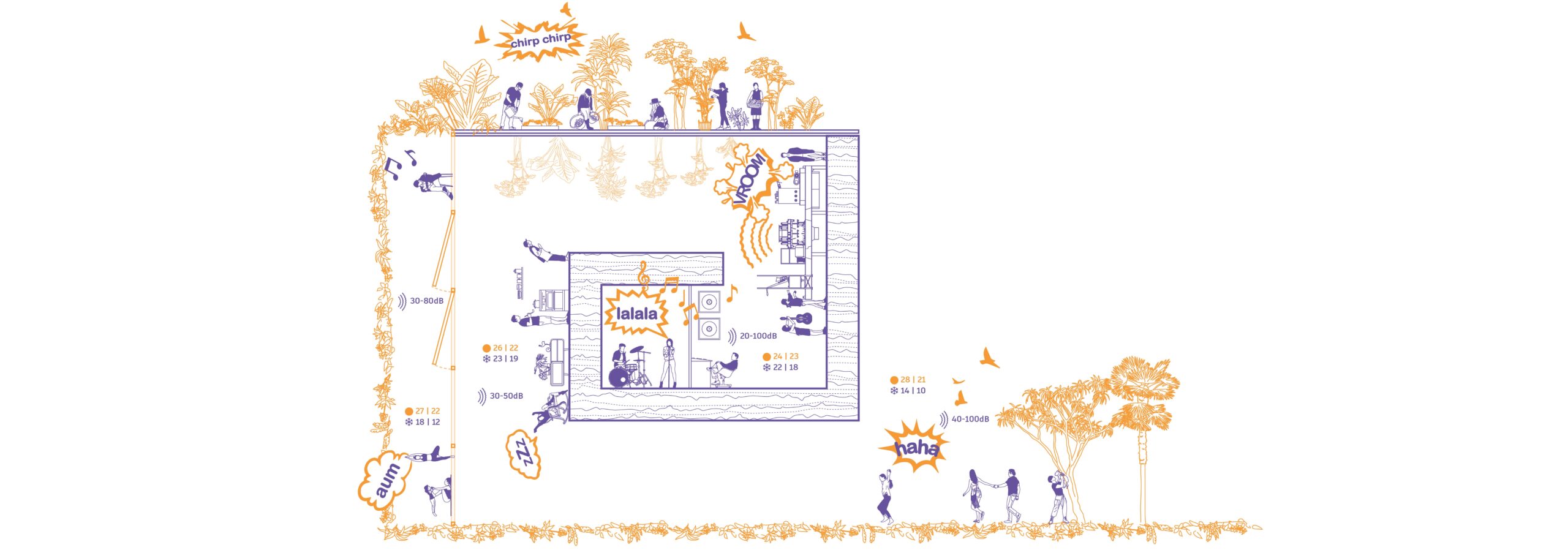
Image above is a conceptual exploration of the defined concept of mixing spaces and creating a thermal and acoustic gradient moving inside out.

Moving to a building scale, the proposed spiral movement is implemented in a section. The program is defined horizontally, with a basement designated for large-scale industry, a plinth for public functions, and residential units ascending above.
Beyond the basement, industrial spaces are strategically positioned at the onset of the spiral, addressing thermodynamic requirements. These spaces necessitate efficient air exchange without causing noise contamination on-site, a feat achieved through the incorporation of wind shafts.
For enhanced acoustic properties shapes are rounded of, to either stop the passage of sound or to disperse sound waves more evenly minimizing the buildup of echoes and creating a more balanced acoustic environment.
Looking at the layers of the spiral, after industrial “cores” and a layer of housing, the last – second skin, is a gradient space, left for a comfortable, more controlled outdoor environment for circulation and communal gatherings.
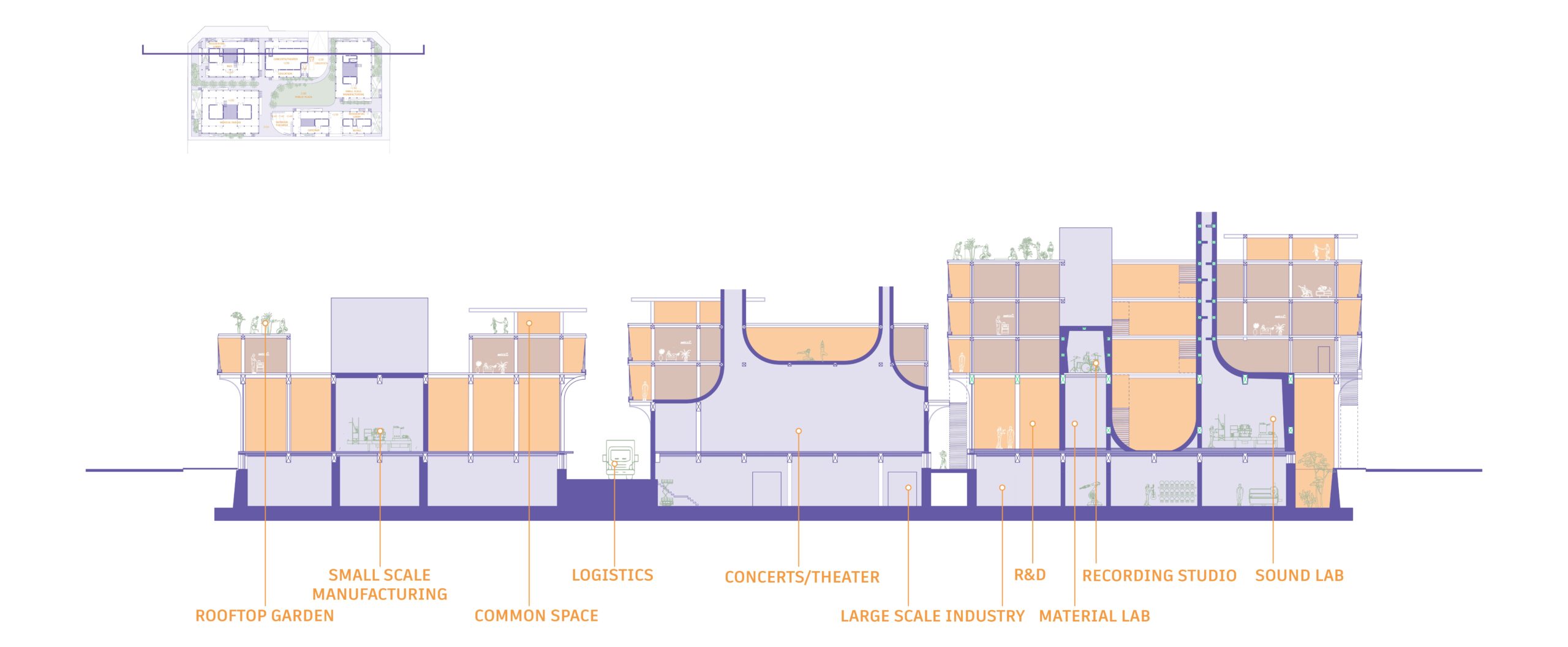
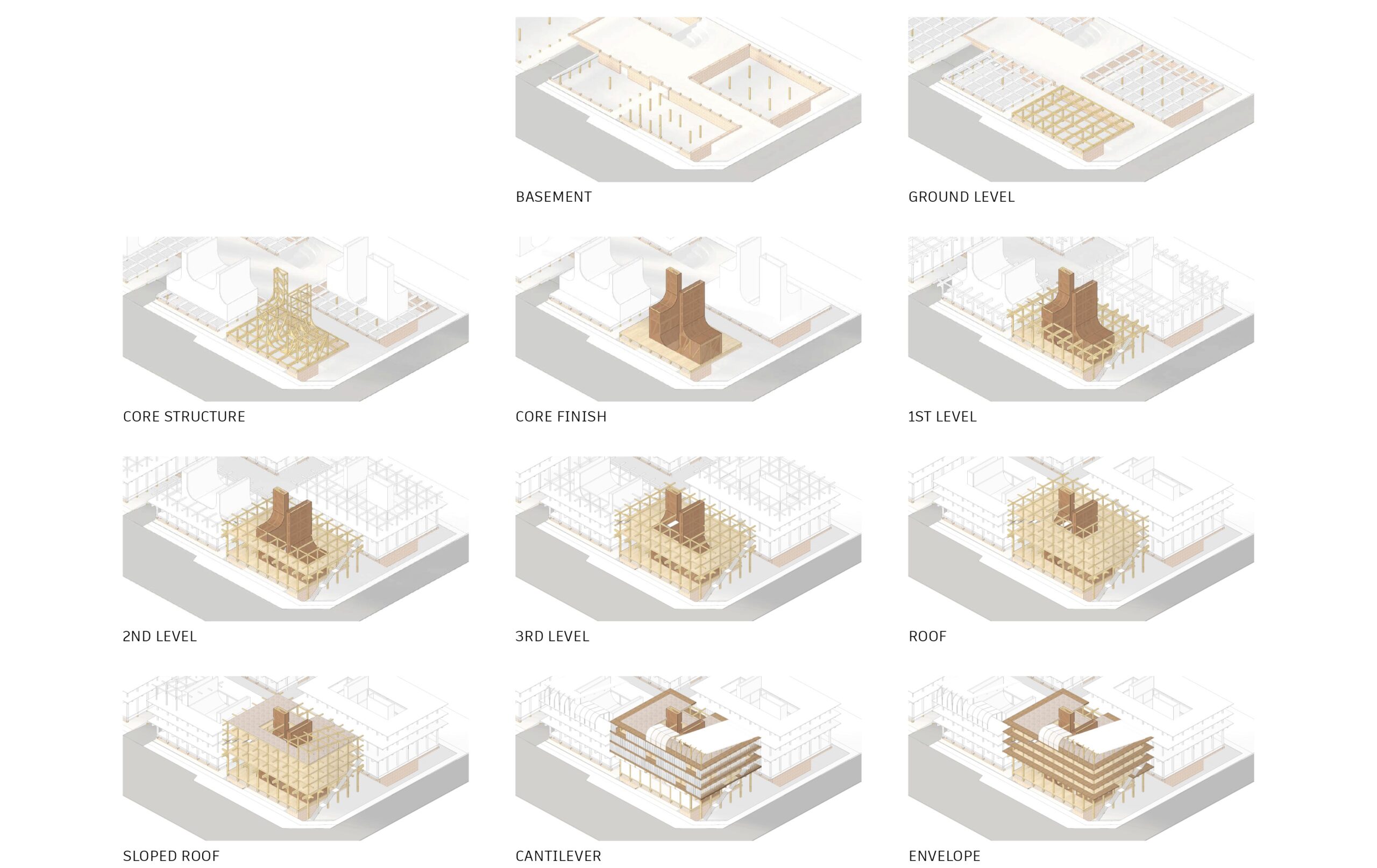


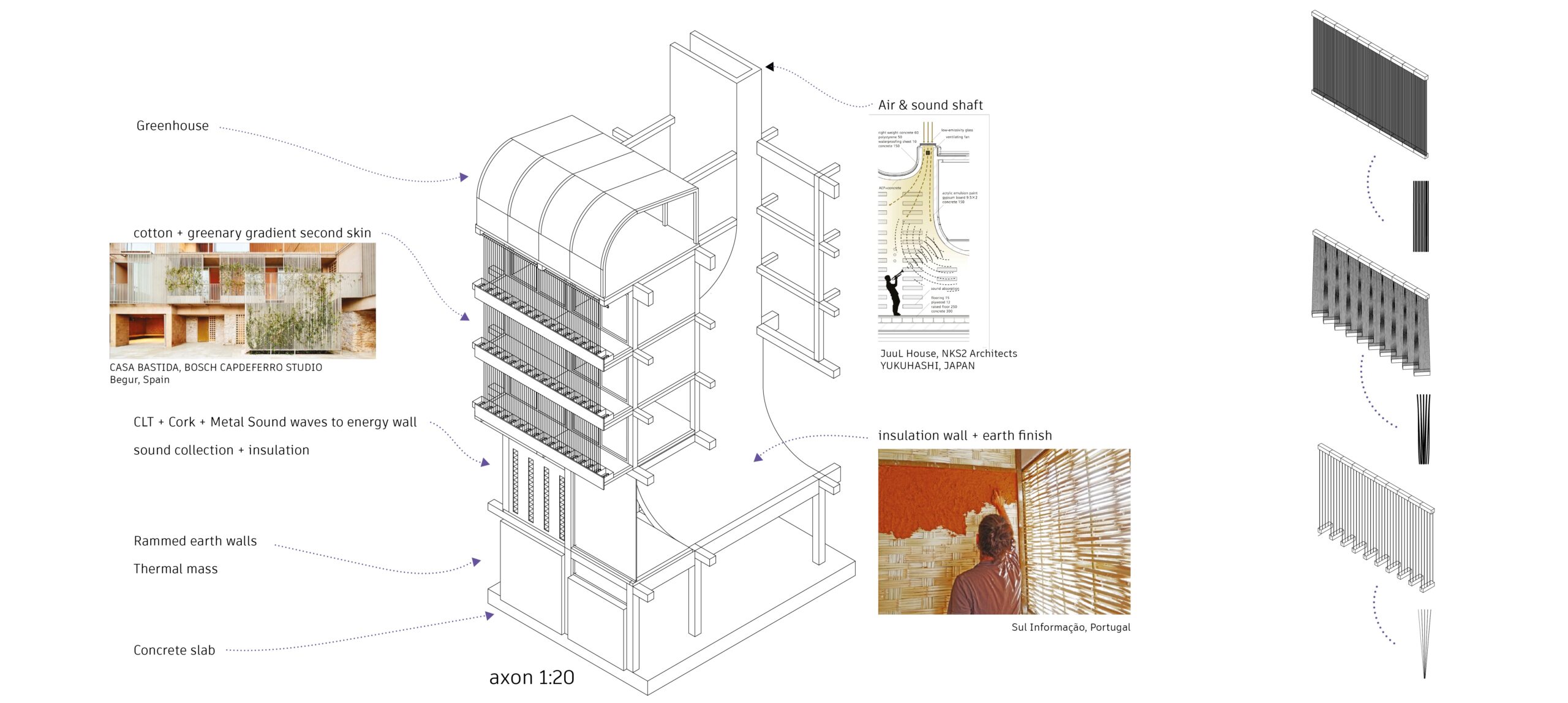
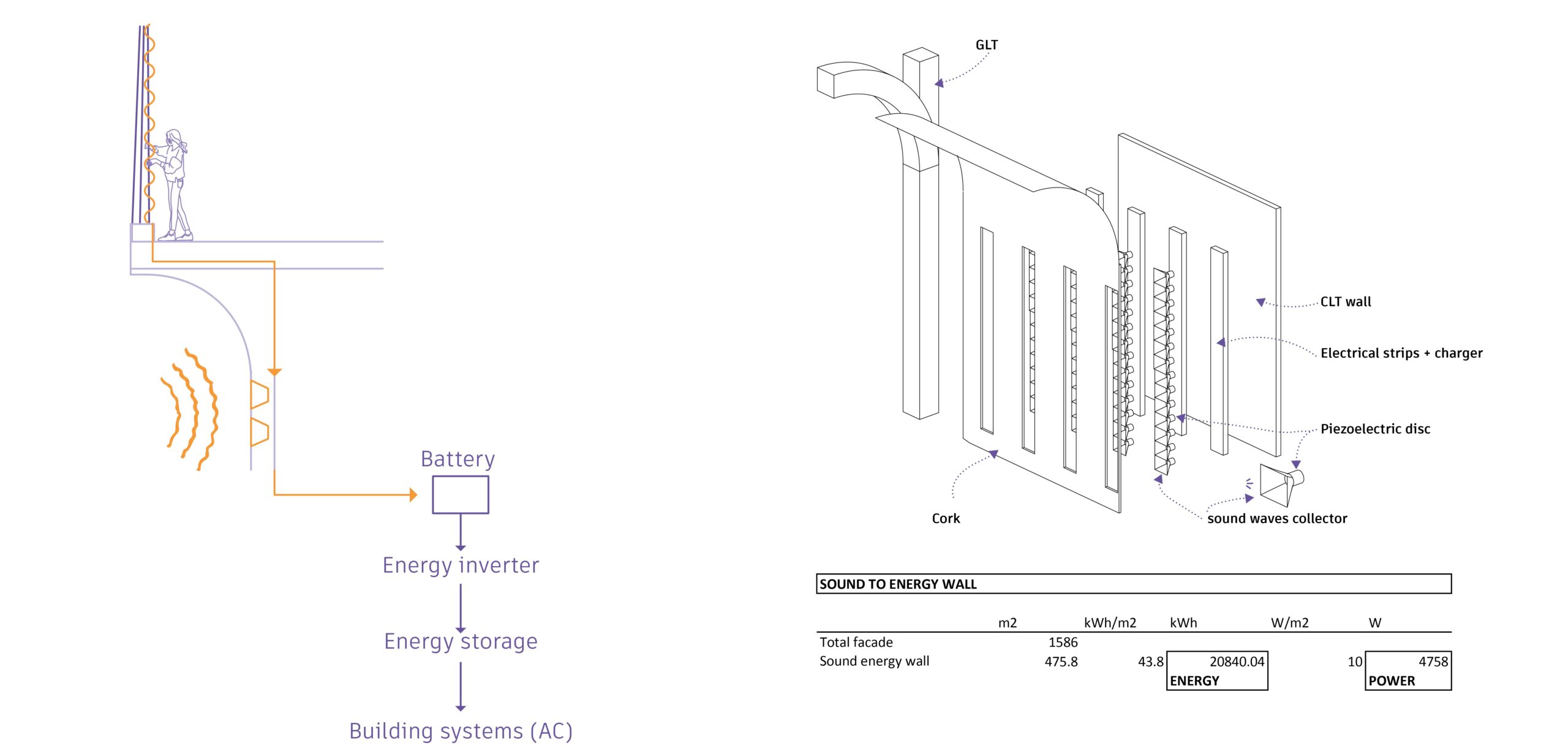
The building’s envelope is intricately intertwined with its internal spaces, particularly the curved earth-finished cores where louder musical activities occur, benefiting from the curvature for enhanced acoustics.
Transitioning from bottom to top, the sunken ground level features rammed earth walls wraping the perimeter of the large-scale industry, with slender openings at the top that allow natural light into the basement.
Ascending to the elevated ground level, the facade serves either as glazed surfaces or as a medium for energy production from sound. It incorporates slender strips of metal to reverberate sound and capture it effectively, complemented by cork strips to absorb excess noise and foster a comfortable indoor environment.
Strings function as shading elements and supports for climbing plants, creating a harmonious second-skin facade alongside glazing or solid walls further within the apartments. This interstitial space fosters a gradual transition, evoking an almost outdoor atmosphere for circulation and communal activities.
The roof seamlessly extends the facade’s design, alternating between string-covered sections and greenery or adopting a greenhouse configuration to further integrate with the building’s aesthetic and environmental objectives.
